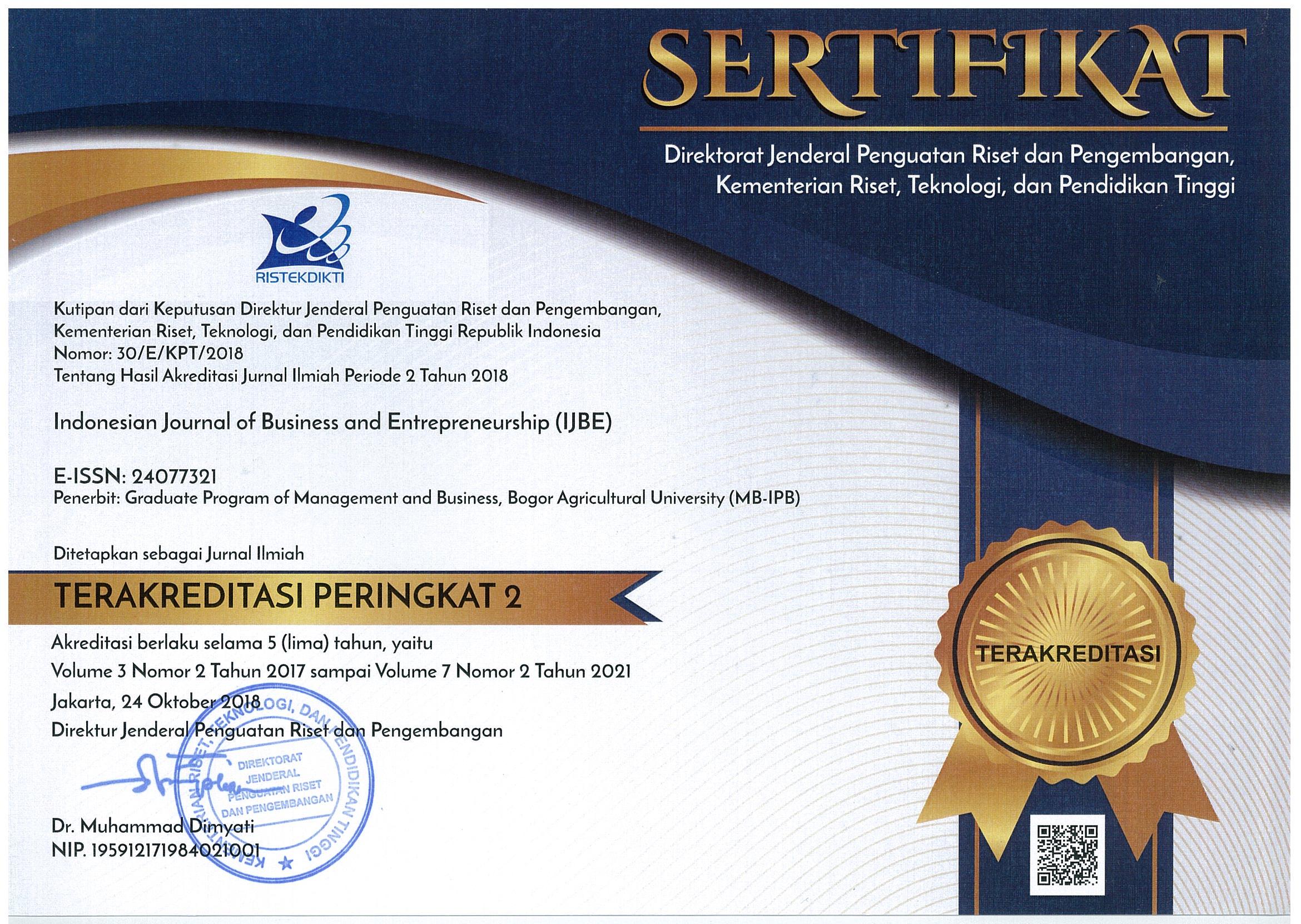Circular Economy Business Strategy of Organic Fertilizer in Parikesit Farmer Group
Abstract
Background: The conception of this research is the increasing importance of the implementation of the scientific field of Circular Economy (CE) in technical and operational aspects, in the specific agribusiness system of Liquid Organic Fertilizer (LOF) marketing management. Parikesit Farmer Group is one of the farmer-owned businesses that has the aim of improving the economy of farmers in Bangunsari Village, Pamarican District, Ciamis Regency, especially in agriculture. The Parikesit Farmer Group has previously been one of the pioneers of organic farming with organic rice commodities. In addition, the farmer group developed its business as a producer and distributor of LOF sales. The Parikesit Farmer Group has great potential in supporting the circular economy concept by optimizing the development of the LOF business.
Purpose: This research aims to identify the condition of the existing business model of the Parikesit Farmer Group by conducting BMC mapping, identifying the strengths, weaknesses, opportunities, and threats owned by the Parikesit Farmer Group, formulating business development strategies, and determining alternative priority strategies for developing the Parikesit Farmer Group's organic fertilizer business.
Design/methodology/approach: The methods used in this research are Business Model Canvas (BMC), SWOT analysis, and Analytical Networking Process (ANP).Findings/Result: The results of the analysis of strategy formulation and SWOT analysis produce nine alternative strategies. Based on the ANP analysis, the priority that must be implemented is more education on quality organic fertilizers, it is hoped that consumers will buy more organic fertilizer products.
Conclusion: This research successfully mapped the business model canvas of the Parikesit Farmer Group in accordance with the nine BMC elements, namely customer segments, value propositions, channels, customer relationships, revenue streams, key activities, key resources, key partnerships, and cost structure for its business development process.
Originality/value (State of the art): The originality lies in its contribution to the existing literature regarding the incorporation of the BMC method, SWOT analysis, and ANP analysis in determining agribusiness development strategies.
Keywords: ANP, BMC, Circular economy, fertilizer, SWOT








